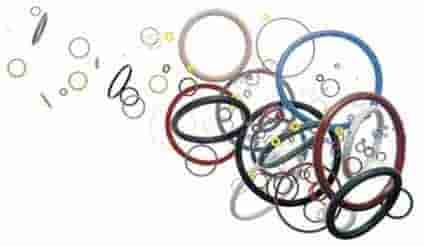
O-Rings
Description
Introduction
O’rings are the most commonly used seal worldwide due to their simple, economical and efficient design. An o’ring is a torus shaped ring (like a doughnut) that is used to prevent leakage of fluids and gases by filling a clearance gap between two mating hard surfaces with a softer material (usually rubber or plastic).
Despite their simple design, there are many significant factors to be considered in the successful design of an o’ring seal… Material compounds, sizing, groove design and environmental aspects are vitally important to regard when designing an o’ring seal. Get it wrong and the consequences are potentially catastrophic and expensive.
O-Ring Compounds
O’rings are typically manufactured in various rubber compounds such as nitrile, fluorocarbon (Viton®), neoprene, silicone and thermosetting plastics like polyurethane and Teflon. Within each of these compounds, there are many different grades of compound which affect the o’ring’s physical properties and chemical resistance. Grading of compounds comes about from the mixing of various fillers, vulcanizing agents, accelerators, aging retardants and other chemical additives to the base polymer which modify and improve the physical properties of the polymer to meet either the requirements of a specific application or for a broad spectrum of applications.
There are different grades for hardness, colour and temperature range. There are grades for contact with food, drinking water and sewerage. Grades for pharmaceuticals, semiconductors, resistance to radiation, resistance to explosive decompression and many more. Careful planning prior to specification is vital for a successful o’ring seal design.
Selecting a compound
There are important factors to consider when selecting a suitable o’ring compound for an application. Operating environment and the physical characteristics of the elastomer must be considered. Incompatibility can shorten seal life, increase machine downtime and contribute to a catastrophic failure.
Operating environment factors
In order to mitigate issues with incompatibility, the following environmental factors must be taken in consideration when selecting a compound.
Chemical compatibility:
The effects of an incompatible chemical on an o’ring elastomer are generally evidenced by volume change. The o’ring may absorb the media, causing it to swell in size and soften. Or the media may extract plasticisers and other additives from the o’ring compound causing the seal to shrink, harden and become brittle. Sometimes slight volume swell is desirable as it compensates for variables such as compression set. Shrinkage on the other hand, can intensify an existing compression set problem, cause leakage and contaminate the sealing medium with the extracted particles.
Temperature: Temperature incompatibility can severely shorten seal life. High temperature exposure initially softens an elastomer, but after extended exposure, the o’ring can cook and cause irreversible changes to the chemical structure of the elastomer where it can harden and become brittle, possibly releasing contaminating particles into the medium. Unlike high temperatures, changes to the elastomer from excess low temperatures are generally not permanent. Extended exposure to very low temperatures generally increases an elastomer’s hardness, but will return to a softer state as temperature rises. Temperature can also change the characteristics of a chemical medium being sealed where a normally compatible chemical at ambient temperature, becomes incompatible as temperature rises.
Pressure:
Effects of excess pressure on an o’ring seal is generally evidenced by the o’ring extruding into the clearance gap of the o’ring groove or a complete rupture of the seal itself. This may require the use of a harder compound, or a review of o’ring groove dimensions. Another effect of excess pressure is permeability where a gaseous medium diffuses into and passes through the elastomer. A sudden change of pressure or explosive decompression may rupture the o’ring as pressurised gas suddenly tries to escape from within the elastomer.
Exposure to UV and radiation:
Depending on compound, effects of low level ultra violet radiation such as sunlight on an elastomer can have a minimal effect, but prolonged exposure will shorten shelf life. Therefore o’rings should be stored away from direct sunlight and sources of ultra violet light. Gamma radiation can have a severe effect on an elastomers compression set characteristics (see below), allowing the elastomer to lose its compressive memory, making the seal susceptible to leaks. But generally in these applications, gamma radiation is at low levels and environmental factors other than radiation will be more significant.
Compound Hardness
Rubber o’rings are available in various hardness’s. There are two common standards for measurement of rubber hardness: Shore Durometer (specifically Shore A Durometer) and International Rubber Hardness Degrees (IRHD). Both Shore A and IRHD hardness values are comparable, the difference being IRHD is assumed to have a higher accuracy. Measurement is taken with a device which uses a ball or cone indenter connected to a spring and gauge. This device is pressed against the rubber. As the rubber deflects, a value is given. The higher the value or Duro, the harder the material (i.e. less deflection equals a higher value).
Shore A Durometer of various common materials:
25 Duro: Rubber band
55 Duro: Door seal, soft o’rings
70 Duro: Most o’rings, automotive tyre tread
90 Duro: High pressure o’ring, hydraulic u-seal
100 Duro: Ebonite rubber, skateboard wheels:
The majority of o’ring rubbers have hardness’s between 60 and 90 Duro. The most common hardness found is 70 Durometer. Sealing Australia stocks a wide range of o’rings from 40 Duro to 90 Duro.
Groove Design
As important as the o’ring seal itself is the groove that the o’ring seats into. The groove must be designed to accommodate not just the o’ring size, but also its intended usage; be it dynamic or static operation, radial or axial loading, vacuum or high pressure.
Please see our Groove Design page for tables of suggested groove dimensions for various applications of imperial and metric o’rings.
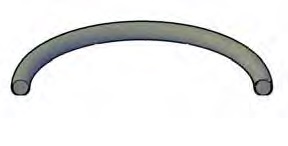
| Profile | Material | Temp | Pressure | Prod No |
|---|---|---|---|---|

|
NBR 70A or 90A Aflas Viton FKM Silicone HNBR EPDM Polyurethane PTFE TEFLON Encapsulated Neoprene FDA Approved AS4020 |
-40° - +220° F | O’ring Groove Design As important as the o’ring seal itself is the groove that the o’ring seats into. The groove must be designed to accommodate not just the o’ring size, but also its intended usage; be it dynamic or static operation, radial or axial loading, vacuum or high pressure. The following information is a guide for o’ring groove dimensions for both static and reciprocating dynamic applications. The info is based on 70 Shore A Durometer hardness only. Surface Finish Generally surface finish for sealing surfaces are as follows… 63RMS maximum: For non-critical sealing surfaces such as groove sides 32RMS maximum: For static sealing on critical sealing surfaces such as groove base and top. 16RMS maximum: For dynamic sealing surfaces and for sealing gases in a face type sea |
ORI/ORM |
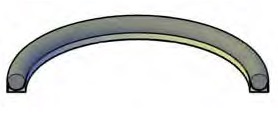
| Profile | Material | Temp | Pressure | Speed | Prod No |
|---|---|---|---|---|---|

|
Nitrile Urethane PTFE Nylon Acetal |
-22° - +212° F | 0 - 7250 PSI |
3 FT/ | SGS |
-
 Excavator
Excavator -
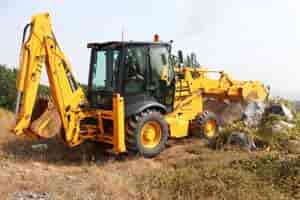 Backhoe-Loader
Backhoe-Loader -
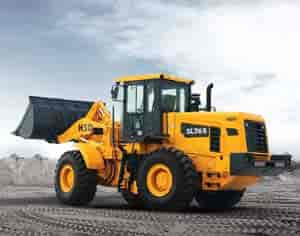 Loader
Loader -
 Dozzer
Dozzer -
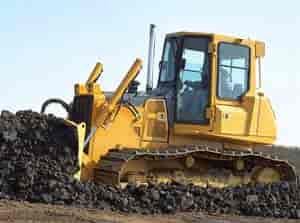 Bull Dozzer
Bull Dozzer -
 Crane
Crane -
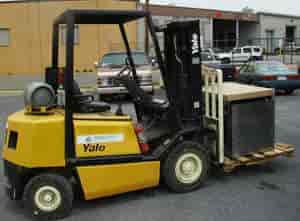 Forklift
Forklift
